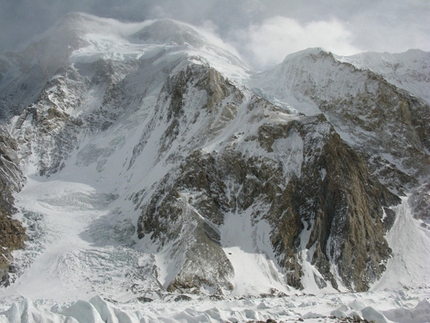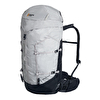Simone Moro, the drama on Broad Peak and winter mountaineering in the Himalaya

 1 / 6
1 / 6 arch. Simone Moro
arch. Simone Moro
THOUGHTS ABOUT WINTER MOUNTAINEERING by Simone Moro
"Unfortunately it's a mountaineering tragedy which gives rise to these thoughts, which makes me try to attempt to comprehend and explain what winter mountaineering on the world's highest peaks is really all about. We're used to discerning and evaluating ways of climbing a mountain or a face according to the style of ascent, the time required, the methods implemented and teams who make the climb. We reduce everything therefore to a simple question that defines the merits and values of a particular climb, unconsciously accepting that this has transformed into something physical and technical rather than an activity which is still far removed from the pure sports aspect. Just like a great sailing race across the oceans or a grueling race through forests or across deserts, one now tends to consider alpinism as an event, stripping away the concepts of exploration and adventure in the truest, most profound sense of these words.
The struggle against the elements, against the mountains and those legendary tales of daring feats, are quite rightly useless, false burdens which alpinism and its literature now do without. But we have made the mistake of catapulting everything towards the obvious, towards what is controlled and controllable, towards action which is dicated by a sole rational and strategic choice . It seems as if everything boils down to tactics, to press releases, sponsors, statistics about who is best at doing these four things, who is better at recounting stories than others... In short, we've trapped our mountaineering values into a corporate mentality, and the way in which we watch action and mountaineering events unfold has become domesticated or, worse still, pub-talk.
In these hours we are powerlessly witnessing the tragedy unfold on Broad Peak. Two alpinists have returned to base camp safe and sound with the historic first winter ascent of the mountain, and another two will not be able to recount this story, having disappeared at 7900 metres after a dramatic bivouac at inhuman temperatures. The team was formed by alpinists who were both young and old, from different generations and backgrounds, but who demonstrated how nothing has changed in terms of difficulty, and unfortunately in terms of drama, about winter ascents now compared to the 1980's, regardless of styles and gear.
Climbing an 8000er in winter is still one of those inexplicable impulses which makes man spring to action, that lead him to voluntarily free himself from everything else, even of primary safety and time, to realise a dream which renders him so damn alive, excited, a complete protagonist of his own existance. Winter mountaineering on the highest mountains in the world is and always will be nothing more than dictated bya free choice, far more inconvenient than one might think. Where even if there are a dozen others you are still alone, where you are far away from everyone and everything else even if you possess all the satellite telephones the world has to offer, where you are helpless regardless of the most sophisticated technology and equipment. No one can do anything, absolutely nothing in winter and good weather makes its appearance twice, maybe three times during the entire season. A handful of days in three months, during which one is a prisoner, by choice, of one's dreams. It is as if you are locked in a stormy sea, with 30-metre high waves, right in the middle of the ocean. No one can do anything for you and only you can deal with the weight and the dynamics of your decision, the one which brought you there. Every decision you make is yours, yours only.
More than a third of a century has passed since the first winter ascent of a Himalayan giant, at the time with supplementary oxygen, of Everest, the first Eight-thousander to be ascended in the coldest season. Since then the exploration of the fourteen highest peaks, the entire collection of the first winter ascent of each and every one of them, is still an on going affair. In the '50s this would have been called the period of conquest, now you can call it what you wish, but it is still exploration. Exploration in its absolute form, of which Polish mountaineering has a remarkable habit of being a prime player, with its Tatra home mountains that peak at a mere 2,600 metres! I simply had the honor, ability and good fortune to add a strip of green to their flag, to three of the 12 first winter ascents and to have returned home safe and sound from those and other winter expeditions.
Man wants to be where his thoughts drive him. On the moon, Mars, Venus, in the oceans, caves, abysses, deserts and mountains. This is what winter mountaineering is all about. The desire to be and go where man has not yet succeeded, and it is because of this that one day Nanga Parbat and K2 will also be attempted, and climbed, in winter. This is no inner drive motivated by dynamics of convenience, of usefullness, of danger levels. No one wants or believes the world can be changed by climbing in winter. Just like those who at first did not think they would, but then in reality actually did, change the world."
Simone Moro
05/03/2013 - Broad Peak first winter ascent by Polish expedition!
06/03/2013 - Difficult hours for Poles on Broad Peak first winter ascent
08/03/2013 - Broad Peak: all hope lost for Maciej Berbeka and Tomasz Kowalski
| www | |
| www.simonemoro.com | |



 Copia link
Copia link





 See all photos
See all photos






















